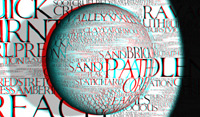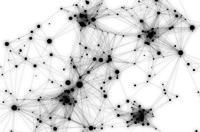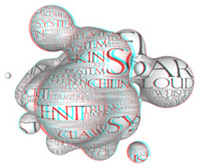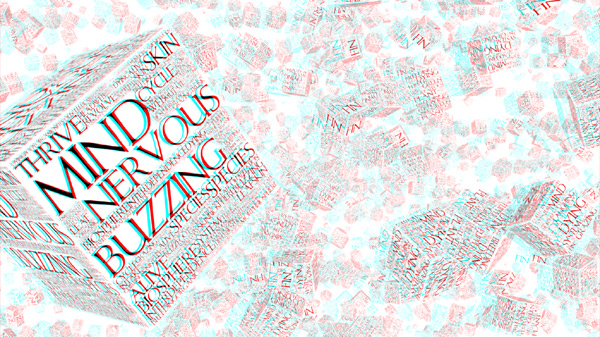
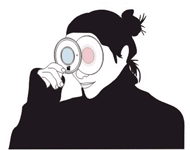
|
|||||
|
|
|||||
| This exhibit is a three dimensional
exploration of flat, generative constructs projected onto curved surfaces. |
|||||
|
|||||
To begin the exploration, computaional systems are grown in a customized, generative paint program written in Macromedia Flash MX. The paint program allows real time creation and positioning of three types of reactive elements, space filling words, self connecting nodes, and recursive limbs. |
|||||
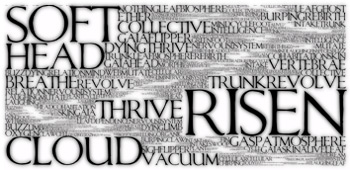 figure a. typical results of the space filling word algorithm The space filling word algorithm recursively fills a region of space with increasingly smaller type. The source of English words comes from external files containing lines of poetry or hard coded collections of self-similar word sets. Filled regions of space were texture mapped into computational scenes and projected onto models. |
|||||
|
|||||
The tree garden generates a forest
of recursively grown trees. Properties of the tree such as branching,
trunk size, and age are controlled by settings within the paint program.
Individual trees were painted
onto models in real time and stereo-photograped. 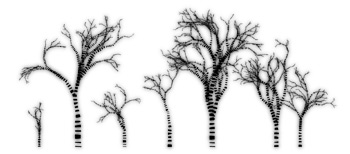 figure c. typical forest growth of the recursive tree algorithm |
|||||
Each unique generated composition is then projected across curved, organic surfaces. This resulting multidimensional scene is then stereo photographed. Finally, pairs of photos are digitally combined to produce a 3D anaglyph. |
|||||
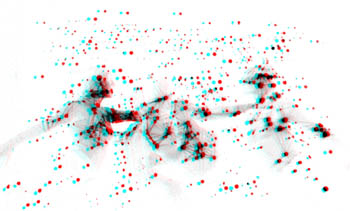 stereo photograph. four women in projected in the organized light of a Node Garden. The stereo photographic technique used here places all three dimensional forms behind the plane of the screen. This presents the illusion that the scene is being viewed through a window. |
|||||
|
|
|||||
|
|
|||||
